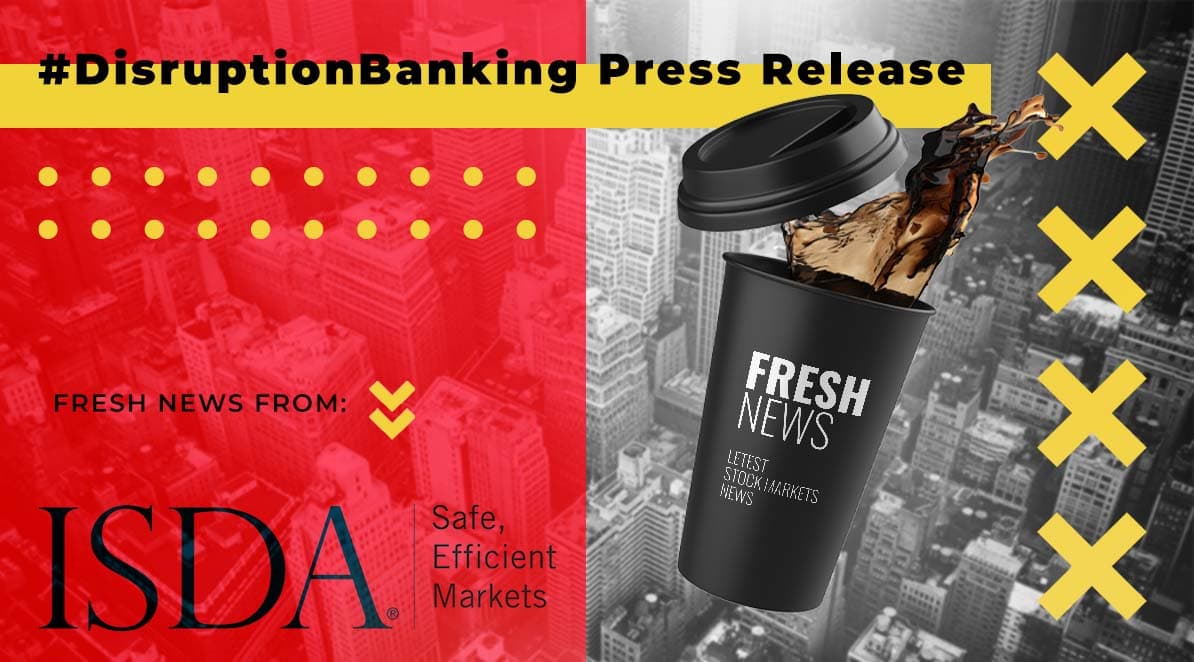As we enter a fast-moving new era for financial services, old and new players are finding ways to work together to ensure their survival. Wendy Atkins explores the ways in which traditional institutions and fintechs can collaborate.
The financial services sector is experiencing a revolution. We’ve already witnessed a similar process in other industries, such as music and retail. Faced with the prospect of new technologies and platforms changing consumer habits and offering more customer-centric services, traditional firms have been slow to wake up and move with the times. The music industry is a case in point: rather than embracing digital streaming when this first hit the market, it unsuccessfully tried to shut the technology down and ended up putting itself on the back foot.
This transformation of long-standing institutions is something that is extending into the financial services world, too. Fintech startups are coming in and shaking up a sector that was traditionally dominated by old – and often formidable – organisations. Today, both sides bring something important to the party, and there is a growing focus on combining the strengths of the traditional, large financial firms with smaller, more agile start-ups, to capitalise on the synergies of both and to roll out products and services that are fit for the 21st century. As new technologies and platforms have been introduced, we’ve experienced the democratisation and decentralisation of services, which has made it easier for smaller players to enter the market.
Traditional financial services firms now recognise that they need to remain relevant if they are to survive into the future. They can draw on their existing strengths: loyal customers, an ability to scale and navigate a complex regulatory environment, risk management, infrastructure, access to financial resources and high levels of knowledge and experience. However, their weaknesses – such as drawn-out decision-making processes, a silo mentality, a conservative attitude to change and an inward-facing culture – make it difficult to be dynamic in a fast-moving market. That’s why they are keen to find ways of working with fintechs, which offer the positives of lean, dynamic operations and fresh approaches to challenges, but which don’t have the scale or financial resources, and may not be able to keep up with new regulations or enjoy the trust and loyalty of customers. According to PwC’s Global Fintech Report, 82% of incumbents expect to increase their fintech partnerships in the next three years.
Regulations
Keeping up with regulatory requirements can be quite daunting for fintechs, and this is where cooperation with traditional financial firms can pay dividends. For example, standard compliance can include rules covering peer-to-peer lending, M&As, the General Data Protection Regulation (GDPR), Basel, Dodd-Frank, the Comprehensive Capital Analysis and Review (CCAR), the Markets in Financial Instruments Directive (MiFID), the Payment Service Directive (PSD2), AML and KYC.
The relentless pace of innovation has also put the role of regulators under the spotlight. Although regulatory constraints have traditionally been seen as a barrier to entry to the world of financial services, this is now changing as disrupters start to challenge the risk-aversion of traditional financial services firms. In turn, regulators see the advantages of collaborations between fintechs and traditional financial institutions and are playing a role in facilitating them.
Some partnerships and innovations occur quite opportunistically. For example, the IIF, Center for Financial Inclusion and Action’s report, ‘How Financial Institutions and Fintechs Are Partnering for Inclusion: Lessons from the Frontlines’, reveals how MicroBank, a subsidiary of Spain’s CaixaBank, connected with Entrepreneurial Finance Lab (EFL). It says that the bank’s risk director was intrigued by psychometric testing, so decided to pursue a partnership with EFL to expand MicroBank’s lending portfolio to thin-file customers. The report also describes how the head of innovation at India’s ICICI Bank had read a book that highlighted blockchain company Stellar. The bank asked Stellar if it would be interested in a. partnership, and a new digital wallet was born.
Fruitful collaborations rely heavily on traditional institutions’ ability to assess whether partnership candidates have the necessary characteristics for sustained success across four areas: people, finance, business and technology. To attempt to address this challenge, Capgemini has launched a ScaleUp Certification process, a tool that creates an industrialised model for collaboration and mutual verification that encourages smoother link-ups between traditional financial institutions and fintechs.[/vc_column_text][vc_column_text]Industry experts are clear about the importance of collaboration. Anirban Bose, head of Capgemini’s Financial Services Global Strategic Business Unit and member of the group executive board, pointed out in Capgemini/LinkedIn World Fintech Report: “With more than 75% of fintech firms identifying their primary business objective as collaborating with traditional firms, it is essential that both fintechs
and traditional firms transform their business models by collaborating to drive innovation while retaining customer trust. Without an agile and committed collaboration partner, both traditional and fintech firms risk failure.”
Manoj Kashyap, global fintech leader, partner, PwC US, agrees. In the firm’s Global Fintech Report, he says: “Innovation is happening outside of the organisation, with emergent technologies being leveraged by startups, and if financial institutions want to speed up their innovation they need to significantly increase their collaboration with fintech companies.”
A number of successful collaborations have targeted new customer segments. In emerging markets, some of the poorest people, who had traditionally been unbanked, now have access to new and affordable products and services. For example, Mastercard, Grindrod Bank and Net1 have collaborated to change the way in which social grants are distributed to a largely unbanked population in South Africa. In West Africa, Société Générale is collaborating with TagPay to build the YUP digital banking brand. And in India, Ujjivan and Artoo are partnering for low-income customers. Meanwhile, AXA is working with MicroEnsure to provide insurance coverage to low-income customers in several African and Asian markets.
So how do you find the best partner and engagement model to ensure long-term success? And how do you avoid the pitfalls?
Fintechs and banks need a good understanding of the different cultures and processes within each other’s organisations. For example, fintechs should be aware that the collaboration process could be lengthy and banks’ priorities might change or contacts might move jobs. Banks need to find ways of creating processes that improve time to market. Those involved in such partnerships report that they have learned to speed things up by:
- insulating a partnership from other parts of the institution;
- ensuring clear mandates, budgets, time frames and limited sets of approvals are established;
- moving partnerships through limited due diligence to take a product to pilot stage quickly – full due diligence can be carried out after the pilot;
- creating incentives and timelines to keep a project on track.
It is also crucial to agree the exit mechanism at the end of a project. According to a report from The CityUK, Santander UK and Shearman & Sterling – Transformation and Innovation: a guide to partnerships between financial services institutions and fintechs – this process will depend on the original agreements about:
-
- who retains the rights to new and existing intellectual property;
-
- who retains the ownership of joint assets;
- which party is responsible for maintaining compliance.
Collaboration models
The report identifies seven collaboration models: Application programming interfaces/sandbox; Hackathon/entrepreneur in residence; Startup corporate accelerator; Fintech product sourcing; Fintech joint venture/venture builder; Corporate venture capital; and Mergers and acquisitions.
In the Application programming interface/sandbox model, institutions offer fintechs limited access to some of their infrastructure or services through public APIs, sandbox development environments or anonymised samples of customer data. Those using this approach tend to take a hands-off approach to innovation.
Another approach is the hackathon. Here, institutions present a challenge and invite fintechs to come up with a solution in a limited time. However, all stakeholders need to understand how intellectual property rights will be handled and respected.
Also popular is the Startup corporate accelerator and incubator model, designed for fintechs to scale innovation. For example, Visa Europe’s Collab innovation hub is a 100-day innovation funnel that takes ideas from initial scoping and qualification through market testing and design to proof of concept. This approach gives institutions a chance to capitalise on the most exciting ideas, while those selected gain access to expertise, support and a captive customer base. Such programmes sometimes operate on equity terms, so fintechs need to be sure they understand what they are offering and what they have agreed.
Fintech product sourcing involves a product or service that is market-ready. The institution will test the product with limited segments of its customer base; if successful, they will scale it up business-wide. This lowers the cost and time involved to trial a proposition or product. However, both parties need to understand where they stand with intellectual property rights and exclusivity.
The fintech joint venture/venture builder model sees an institution establish its own stand-alone startup. By setting this up in partnership with a fintech or a venture builder, institutions may bring in specialised skills and investment. However, stakeholders need to be clear about ownership and control of the new company, as well as rights ownership and exclusivity.
The Corporate venture capital model is also well used. In this case, an institution takes a minority stake in a fintech to secure insider access to innovations as they are developed. The Transformation and Innovation report says this is a straightforward investment where legal considerations are standard for large businesses.
The mergers and acquisitions (M&A) model is viewed as one of the most complex because institutions and fintechs must agree on valuations for an institution to buy out a fintech and secure access to innovations. It is also possible to adopt a hybrid approach and agree a tailored framework. This offers greater flexibility and the opportunity to achieve a wider range of partnerships. However, it could also result in greater legal complexity.
As we approach 2020, there is no longer a battle for market dominance between traditional financial firms and startups. Instead, we are moving into an era where survival requires collaboration between the old and the new. Companies from two very different cultures can work together to take advantage of the strengths of each, while legal and regulatory frameworks will continue to adapt to minimise risks and uncertainty. This way, customers will be well placed to take advantage of truly modern products and services that are fit for the future.















